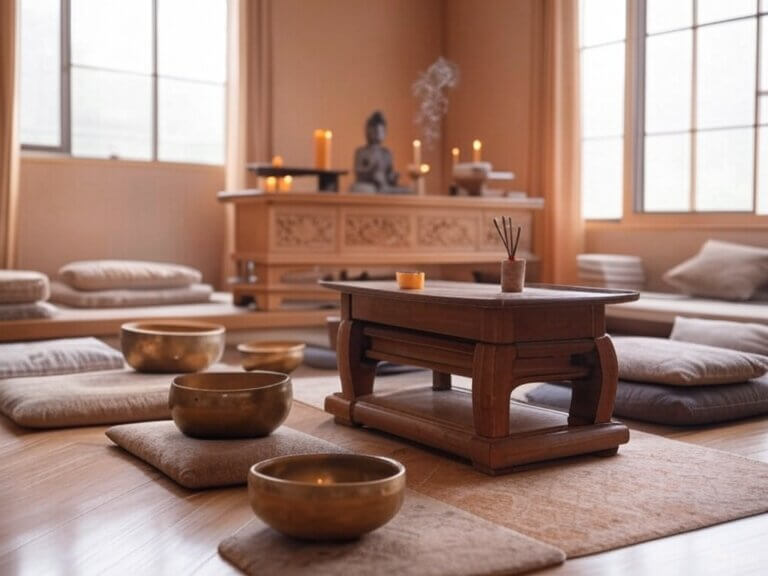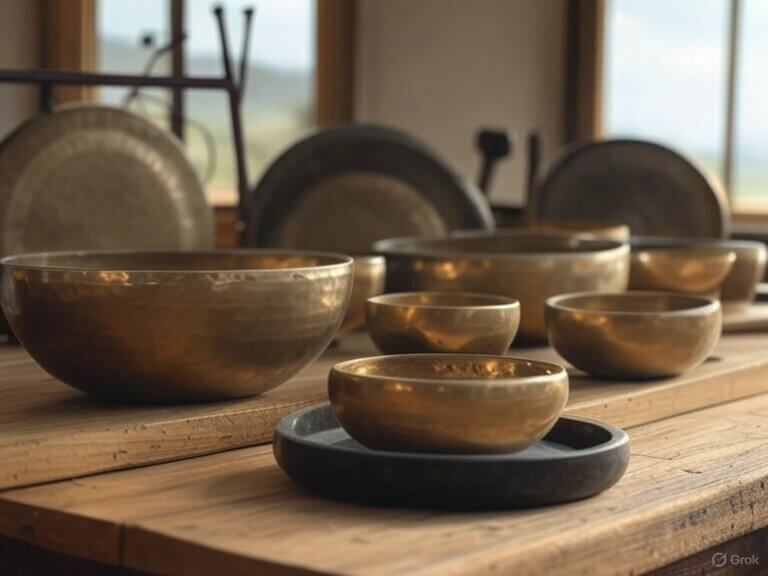Awakening in Stillness
The day begins before the sun breaches the horizon, in a quiet space where silence is not just an absence of sound but a presence of peace. A spiritual sound healer rises early, often around 5:30 a.m., to greet the stillness of dawn. This is a sacred time for personal practice—meditation, breathwork, or gentle chanting—to align their own energy before offering it to others. The healer might sit cross-legged on a cushion, eyes closed, tuning into the subtle vibrations of their body and the world waking up around them. This ritual is not rushed; it’s a slow unfolding, a way to clear the mind and set an intention of serenity for the day ahead.
Preparing the Sacred Space
By mid-morning, the healer turns their attention to the tools of their craft. A room—perhaps a cozy studio or a corner of their home—becomes a sanctuary. Singing bowls, tuning forks, gongs, and chimes are carefully arranged, each instrument cleansed with sage or palo santo to release any lingering energies. The air hums with anticipation as they test the resonance of a crystal bowl or strike a gong, listening for the purity of its tone. Natural light filters through a window, and a faint scent of lavender lingers from an essential oil diffuser. This preparation is meticulous, a blend of practicality and reverence, ensuring the space feels safe and inviting for those who will soon arrive.
Guiding Others Through Sound
The heart of the day lies in the sessions with clients or groups, often starting late morning or early afternoon. A typical session might begin with a brief conversation—clients share their stresses, intentions, or physical ailments. Then, they lie down on mats or sit comfortably, eyes closed, as the healer begins. The room fills with waves of sound: the deep, grounding hum of a gong, the ethereal ring of a Tibetan bowl, or the soft chime of a koshi bell. The healer moves intuitively, sensing where the energy feels blocked and using sound to shift it. For an hour or more, they guide participants from tension to tranquility, the vibrations acting as a bridge between silence and serenity.
Reflecting and Recharging
After the last session, usually in the late afternoon, the healer takes time to decompress. This might mean stepping outside to feel the earth beneath their feet, sipping herbal tea, or journaling about the day’s experiences. The work is deeply rewarding but can also be draining—holding space for others requires constant attunement. They might play a gentle melody on a flute or simply sit in silence, letting the echoes of the day settle. This pause is essential, a way to recharge their own spirit before evening falls.
Evening Rituals of Release
As night approaches, the healer winds down with rituals that mirror the morning’s stillness. They might light a candle and perform a short sound bath for themselves, using a favorite instrument to release any residual energy picked up from clients. Some nights, they study—exploring ancient texts on vibration, mantra, or the physics of sound—or connect with a community of fellow healers online. By 9:00 p.m., the day closes with gratitude: a quiet acknowledgment of the harmony they’ve helped cultivate, both in themselves and others. Sleep comes easily, cradled by the memory of serenity woven through sound.
In this rhythm, from dawn’s silence to night’s calm, a spiritual sound healer lives their purpose—transforming the invisible into the felt, one vibration at a time.











